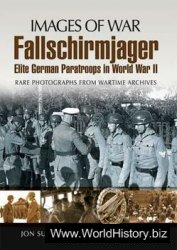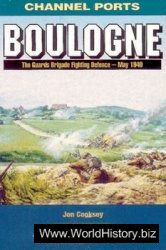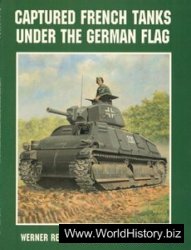In the 1840s and 1850s industrialization in the United States accelerated. Rapid advances were made in the sciences and in technology. Americans found new and better ways to farm, to weave, to travel, and to communicate. Among the important inventions of the antebellum period were the steel plow (1837), telegraph (1837), photography (1839), the rotary printing press (1844), and the sewing machine (1845). In the 1860s the arms industry drove many new technologies that found peacetime applications in the postwar period.
A number of new technologies would be utilized during the Civil War, forever changing the nature of warfare. For example, combat on land had to be almost entirely reinvented during the war. In the Mexican-American War of 1846-48 and other conflicts before that, troops largely used smoothbore muskets. Smoothbores are not very accurate beyond 150 yards, and so opposing armies equipped with them had to be placed very close to one another. In the Civil War, smoothbores gave way to rifled muskets. Rifled muskets have grooves on the inside of their barrels that put spin on bullets, giving them a maximum range of about 500 yards. The rifled musket was actually invented 400 years before the Civil War, but the technology was not widely utilized because of a critical shortcoming: A bullet being fired from a rifled gun has to fit tightly within the barrel, or else the grooves will not put spin on it. Before the 1840s, the only solution to this problem was to use bullets that were exactly as large as the barrel of the gun. These bullets took a very long time to load, since they fit so snugly and they had to be forced down the barrel with a ramrod. A gun that can only be fired once every few minutes is not very useful in the heat of combat.
In 1843 a French soldier named Claude Minie finally found a way to make rifled muskets practical with the development of a bullet that he called the Minie ball. The Minie ball, which is actually conical in shape, is small enough that it can be dropped right down the barrel of a musket. Minie’s key innovation was to make his bullet hollow at one end. The expanding gases released when a musket is fired cause the Minie ball to expand and touch the sides of a rifled musket. And so, the bullet fits loosely when it is being loaded, but tightly when it is being fired. This was the critical step in making rifled muskets viable for use in combat. Another important innovation at this time was the adoption of mercury fulminate percussion caps, which replaced the inefficient flintlock mechanism of the previous century, to ignite the powder charge with vastly improved efficiency and reliability. With these innovations rifled muskets could be fired three times per minute, just as fast as smoothbore muskets.
As more lethal small arms were being invented, parallel improvements in manufacturing techniques were being developed to mass-produce them. In the late 1840s Samuel Colt established the Colt Firearms Company in Connecticut, which manufactured revolving handguns using the latest metallurgical, engineering, and die-cutting technologies. The result was not only a large volume of high-quality weapons but also a set of production techniques that could be applied to shoulder arms for the military. Thus combined, the drive for improved weaponry and the methods of the Industrial Revolution equipped large numbers of soldiers with deadly weapons in a cost-effective way.
Initially, the impact of the rifled musket on the Civil War was to inflict unheard of levels of carnage. Generals on both sides of the conflict had been trained in Napoleonic tactics and strategy, which emphasized frontal assaults and close proximity to the enemy. When the enemy has smoothbores and can only fire at a range of 150 yards, frontal assaults can be effective since there is only time for one volley of accurate shots. When the enemy has rifles and can begin firing at a range of 500 yards—time for two or three or four volleys—frontal assaults invite wholesale slaughter. The combination of rifled muskets and Napoleonic tactics is a primary reason, for example, that the Battle

The recent technological advances of the railroad and the telegraph helped military maneuvers in the Civil War tremendously. Pictured here is Gen. Herman Haupt (top right, in hat and coat), chief of military rail transport for the North. (Library of Congress)
OF Antietam remains the single bloodiest engagement in American history. Quickly, bloodbaths like this forced generals to rethink their tactics. By the end of the Civil War, turning maneuvers and trench warfare were much more common.
Although the Minie ball was the most important, other new technologies also became a part of ground warfare during the Civil War. In 1861 Richard Gatling developed the first reliable machine gun. This hand-cranked device fired standard.58-caliber musket balls at a rate of 400 rounds per minute. It was employed by the U. S. Army up through the Spanish-American War of 1898. Gatling guns were used in a few Civil War engagements, most notably the siege of Petersburg. Repeating rifles, which had been developed in the 1850s, were also issued to some soldiers during the Civil War. These weapons, which utilized a smaller, pistol-caliber bullet, traded off shorter range for a higher volume of firepower. For this reason they were largely issued to cavalry units: With them, horsemen on the ground of their choosing could offer tremendous resistance against better-armed infantrymen. The stand of Gen. John Buford’s U. S. Cavalry on the first day of Gettysburg attests to the effectiveness of carbines when properly handled. Union leaders hesitated to embrace them, however, because repeaters were unreliable and because of concerns that they would encourage soldiers to waste ammunition. Land mines were developed during the war by Confederate general Joseph Rains, although they were crude and some officers refused to use them because they felt they were a cowardly form of warfare. Practical hot-air balloons, invented in 1852 by Henri Giffard, were utilized to provide aerial reconnaissance. The most prominent example occurred during the Warwick-Yorktown siege in early 1862. Two balloons, commanded by Chief Aeronaut of the Army of the Potomac T. S. C. Lowe, were used for spying on Confederate fortifications and for making maps. Although these innovations did not influence the Civil War in a dramatic fashion, all would eventually become important tools for military leaders.
Artillery, by far the most technical of military services, also underwent a rapid transformation that closely paralleled that of small arms. Innovative ordnance engineers such as Robert Parrott and Thomas Rodman conducted extensive testing through the 1840s and 1850s, employing lighter and stronger alloys for cannon barrels to reduce their weight and endow them with improved range and reliability. The standard “12-pounder” cannon of the War of 1812 (firing a 12-pound, solid cannon ball), which weighed 3,800 pounds, thus contrasts with the Civil War “Napoleon” 12-pounder cannon, which weighed just 1,600 pounds. Like small arms, some cannon were now rifled. Rifling the bore of cannon vastly improved their accuracy and range. Moreover, such ordnance was capable of firing the first explosive shells with devastating effect against traditional masonry fortifications. On April 11, 1862, rifled cannon commanded by Gen. Quincy A. Gillmore completely destroyed the works of Fort Pulaski, Georgia, prompting its surrender after a single day’s shelling. Late in the war the Confederates also managed to import a handful of breech-loading Whitworth cannon, which added increased rates of fire to already impressive range and accuracy.
As war on land was evolving during the Civil War, so too was war at sea. In fact, the naval leaders during the Civil War moved very quickly to modernize their fleets. Both the Union navy and the Confederate navy began the war with vastly fewer boats than they needed, and both decided to build their navies around ironclad ships. ironclads, which had been used by European powers during the 1850s Crimean War, were wood vessels partially encased in iron plating. The plating made ironclads harder to maneuver but also much more difficult to sink. Ultimately, the Union was able to put 71 ironclads into service, and the Confederacy was able to commission 25. These ships played a role in many of the major naval engagements of the Civil War. Their most notable service occurred at Hampton Roads, Virginia, when the USS Monitor faced off against the CSS Virginia. Although the meeting of the Monitor and the Virginia was a draw and had little impact on the outcome of the war, it was important because it marked the first time that iron ships had faced one another in battle. The engagement of the Monitor and the Virginia made clear to both military leaders and civilians that the age of wooden ships was officially past.
Another important facet of naval technology was the screw propeller, designed and invented by Swedish engineer John Ericsson in 1837, yet only slowly adapted by the conservative naval bureaucracy. This device was an immediate improvement over existing “side-paddle” arrangements, for it offered less drag, higher speeds, and placement of the steam engine and propulsion gear below the waterline, where it was less vulnerable to enemy fire. One major drawback with all steam-powered vessels was their ravenous appetite for coal and timber to fire up the boilers. This dependence necessitated a complete overhaul of naval logistics, and sea supply vessels were created to accompany the blockading fleets on station. Meanwhile, American naval ordnance underwent an evolution of its own at the hands of Capt. John A. B. Dahlgren. Through continuous experimentation Dahlgren realized that the pressure of a cannon charge is strongest at the rear of the gun and less at the mouth. He therefore designed heavy guns that were decidedly “teardrop” in shape, which allowed stronger charges to be used despite a great reduction in overall weight. Dahlgren’s “soda bottles,” as they were popularly known, were among the most powerful naval ordnance in the world. They were capable of throwing large explosive rounds that could demolish all but the strongest land fortifications.
Ironclads were not the only new technology utilized by the Civil War’s naval leaders. Confederate leaders in particular were willing to be creative because of their lack of resources. For example, the Confederacy utilized both torpedoes and submarines at various points during the war. Although both technologies had been used for thousands of years in one form or another, the Confederate incarnations bear a much greater resemblance to the modern version. And when the H. L. Hunley sank the USS Housatonic on February 17, 1864, it became the first time in the history of the world that a submarine had successfully attacked and sunk an enemy vessel.
Military engagements on both land and sea, then, were influenced by new technologies. And at the same time, technology changed the way war was conducted on a broad scale. The telegraph was one critical new tool that Civil War commanders used for logistical purposes. The telegraph had actually been available during the Mexican-American War, but it was not until the Civil War that it became critical. With the spread of the telegraph, spies could gather intelligence and quickly transmit it back to their superiors. Generals could coordinate troop movements over large areas. Politicians could have more of a hand in running the war, albeit sometimes with detrimental effects.
Just as important as the telegraph in shaping logistical planning was the railroad. The railroad had first been developed in the early 19th century, and by the start of the Civil War the nation had 30,000 miles of track, more than any other nation in the world. Railroads provided critical logistical support for both the Confederate army and the Union army. Civil War armies were much larger than the armies that had fought in previous conflicts, and it would not have been possible to keep 50,000 men or more properly supplied if food and other necessities could not be brought to them, often from far away. Railroads were also used to move troops over long distances, which was absolutely critical to both sides. For the Confederates, railroads helped to mitigate their shortage of manpower by allowing soldiers to be moved around to the exact spots where they were most needed. For the Union, victory may not have been possible without the railroad. The Confederacy was a very large geographical area. It could not have been conquered, perhaps, if Union troops could not have been quickly and effectively deployed throughout the region.
Technology therefore influenced every aspect of the war front. Meanwhile, the homefront was by no means immune to the influence of new inventions. For example, the clothing needs of the Union army caused the sewing machine to be implemented throughout Northern factories during the war. Although this was a fairly small change, the move toward mechanization would become a dominant theme of the postwar era. Another important change on the homefront during the war had to do with the role of journalism in American society and in warfare. The spread of the telegraph allowed news to be collected and reported much more quickly than it ever had before. And the rotary press made it possible for enough papers to be printed to meet the demand of a news-hungry American public. Henceforth, the American populace would not be kept in the dark about the operations of the country’s armies.
Equally important, if little heralded at the time, was the great influx of females into the national workforce. Work outside the home allowed many women to break free of their traditional, domestic constraints and work on a paid basis for the first time. As more and more men of draft age were removed from the labor pool, women provided a steady stream of replacement labor supporting the overall war effort. Thus the rise of factory technology increased the availability of paid work for women in the workforce, a phenomenon that would be repeated with even greater effect in World Wars I and II.
As important as new technologies were to the Civil War, it bears noting that new scientific developments did not find their way into all aspects of the conflict, even when they easily could have. The most notable failures were in the area of medicine. Anesthesia was developed by an American dentist more than a decade before the war started. In the 1850s, European doctors began to speak of germ theory, stressing the importance of using clean hands and instruments to perform medical procedures. Nonetheless, these ideas were not embraced by the Civil War medical establishment. As a result, countless thousands of soldiers suffered agonizing pain while undergoing amputations, and thousands of others died of unnecessary infections.
Ultimately, the Civil War had an important role in marrying new technologies with the conduct of warfare. Rifles, machine guns, aerial reconnaissance, iron and steel ships, and submarines would all be indispensable tools for military commanders in the late 19th and 20th centuries.
The Civil War also helped to spread technologies that would shape American life in peacetime. Mechanized factories, newspapers, railroads, and telegraphs would help to remake America’s society and its economy in the postwar era. At the same time, a number of important new inventions and discoveries came about in the postbellum era, as industrial development gained momentum. The internal combustion engine (1875), the telephone (1876), refrigeration (1877), the phonograph (1877), and the incandescent light bulb (1879) were all invented in the two decades immediately following the Civil War.
See also Balloon Corps; Monitgr-Merrimack;
Women s status and rights.
Further reading: Robert G. Angevine, The Railroad and the States: War, Politics, and Technology in Nineteenth-Century America (Stanford, Calif.: Stanford University Press, 2004); Neil Baldwin, Edison, Inventing the Century (New York: Hyperion, 1995); Joseph G. Bilby, A Revolution in Arms: A History of the First Repeating Rifles (Yard-ley, Pa.: Westholme, 2006); Charles M. Evans, The War of the Aeronauts: A History of Ballooning During the Civil War (Mechanicsburg, Pa.: Stackpole Books, 2002); David A. Mindell, War, Technology, and Experience aboard the USS Monitor (Baltimore: Johns Hopkins University Press, 2000); Charles Ross, Trial by Fire: Science, Technology and the Civil War (Shippensburg, Pa.: White Mane Books, 2000); Tom Wheeler, Mr Lincoln’s T-Mails: The Untold Story of How Abraham Lincoln Used the Telegraph to Win the Civil War (New York: Collins, 2006).
—Christopher Bates




 World History
World History









